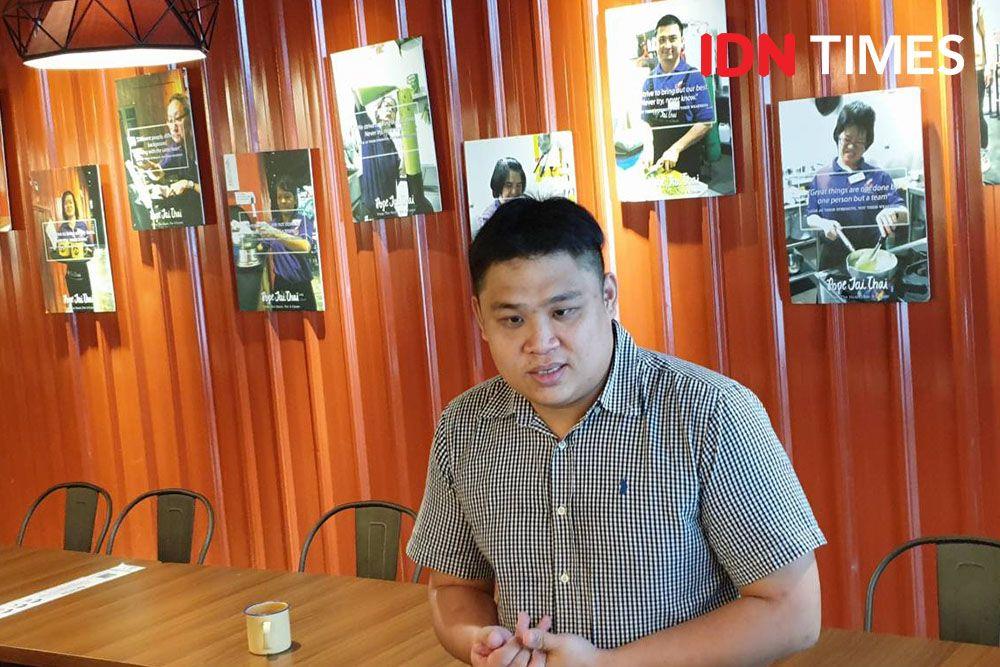By Jonathon Ang

In this interview, we pick the brains of Mr Titus Wu, an eye care practitioner who specialises in childhood myopia control.
An optometrist and orthokeratologist at Titus Eye Care, Mr Wu has appeared in mainstream media to discuss his clinical interests in childhood myopia and cornea and vision rehabilitation. Mr Wu is also an associate lecturer at Ngee Ann Polytechnic, where he teaches clinical skills to final year optometry students.
Epoch Times (ET): What factors are responsible for myopia in children?
Mr Wu: Both genetic and environmental factors play a part in causing myopia in children.
From a genetic viewpoint, a child has a lower risk of developing myopia if the parents are not myopic. However, if one parent or both parents are myopic, the risk of developing myopia and myopia progression increases by approximately three times and six times respectively.
Other than genetics, the environment plays an important part in deciding whether a child develops myopia. Generally, a child has a lower risk of developing myopia if the child spends more than 2.7 hours a day outdoors. A child is deemed to be at a higher risk of developing myopia if he spends less than 1.6 hours a day outdoors.
ET: Is orthokeratology (ortho-k) a solution to myopia control?
Mr Wu: Yes, ortho-k could be an excellent solution for those with progressive myopia. There are many well-documented studies done on this topic, and ortho-k has been proven to retard the progression of myopia significantly by approximately 50 percent, while providing clear vision without the use of spectacles or contact lenses.
In our clinic, patients on ortho-k experience an average of 70 to 100 percent reduction in myopia progression.
Ortho-k has not only helped children to halt their myopia progression, it has also reduced their absolute myopia compared to their pre-treatment myopia power. Despite reports of many successful cases, it is important to note that these cases are purely anecdotal at this moment.
ET: Are there any risks associated with ortho-k?
Mr Wu: The greatest risk would be the risk of infection that could happen with all contact lens use. The risk of infection stated in the medical literature for Ortho-K is approximately 7 in 10,000 patients, which is actually very low.
In order for an infection to occur, there is usually a compromise in the eye surface, coupled together with an introduction of micro-organisms. If patients experience discomfort in their eyes, any delay in seeking medical assistance can complicate matters.
Nevertheless, the risk can be mitigated if certain procedures are followed. We require all our patients to undergo a corneal impression process where each ortho-k lens is designed using a specialized software. This ensures that ensure each lens is perfectly centred and fitted to each eye. A perfectly fitted ortho-k lense will ensure maximum safety and myopia control efficiency and it will not compromise the cornea. Of course, the ortho-k lenses should always be disinfected prior to insertion.
It is also important that we teach patients and their parents to look out for the potential signs and symptoms of eye infection. Professional help could be sought early to prevent unnecessary complications.
ET: How about the use of atropine eye drops in children? Are they effective for myopia control?
Mr Wu: Atropine eye drops comes in various doses, and the most commonly used dosage now is at the 0.01% concentration level. Such a low dosage is deemed safe as there are fewer side effects.
Although studies have documented that atropine eye drops can reduce myopia progression by approximately 50 percent, the use of atropine eye drops is not proven to be effective in reducing existing myopia.
ET: Do you have any other tips for children to take better care for their eyes?
Mr Wu: Children should spend more time outdoors as the brightness of natural sunlight, unlike UV light, is beneficial to their eyes. Hence, we should try to increase natural lighting in the indoor environment whenever possible.
We should also encourage children to take regular breaks from near work like reading or using the computer. They should try to look away for a minute or so with every 30-60 minutes of near work.
















